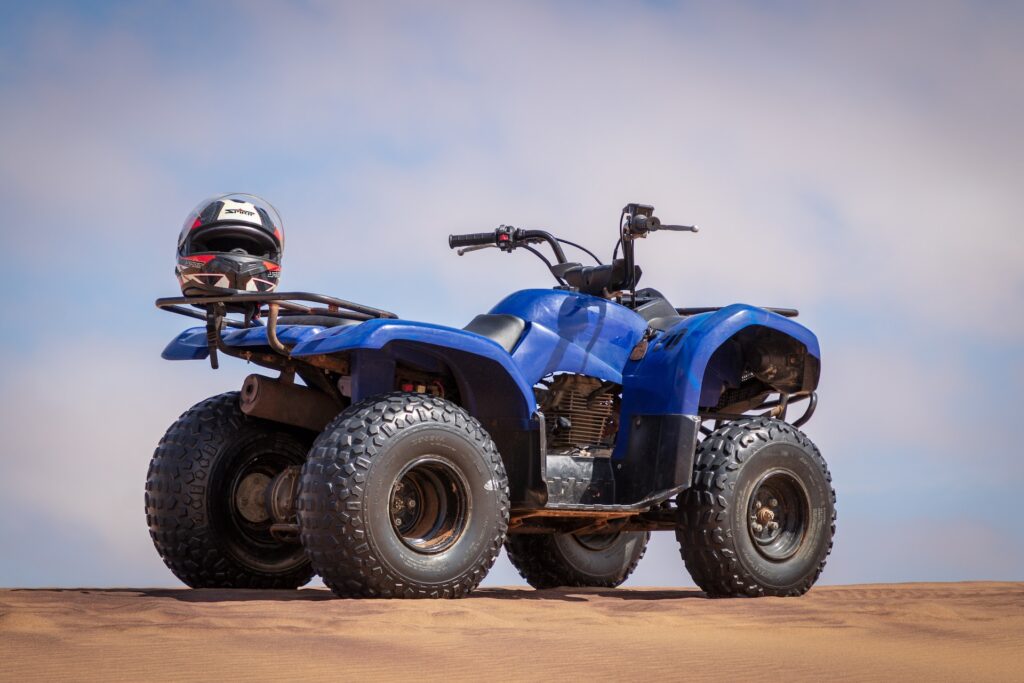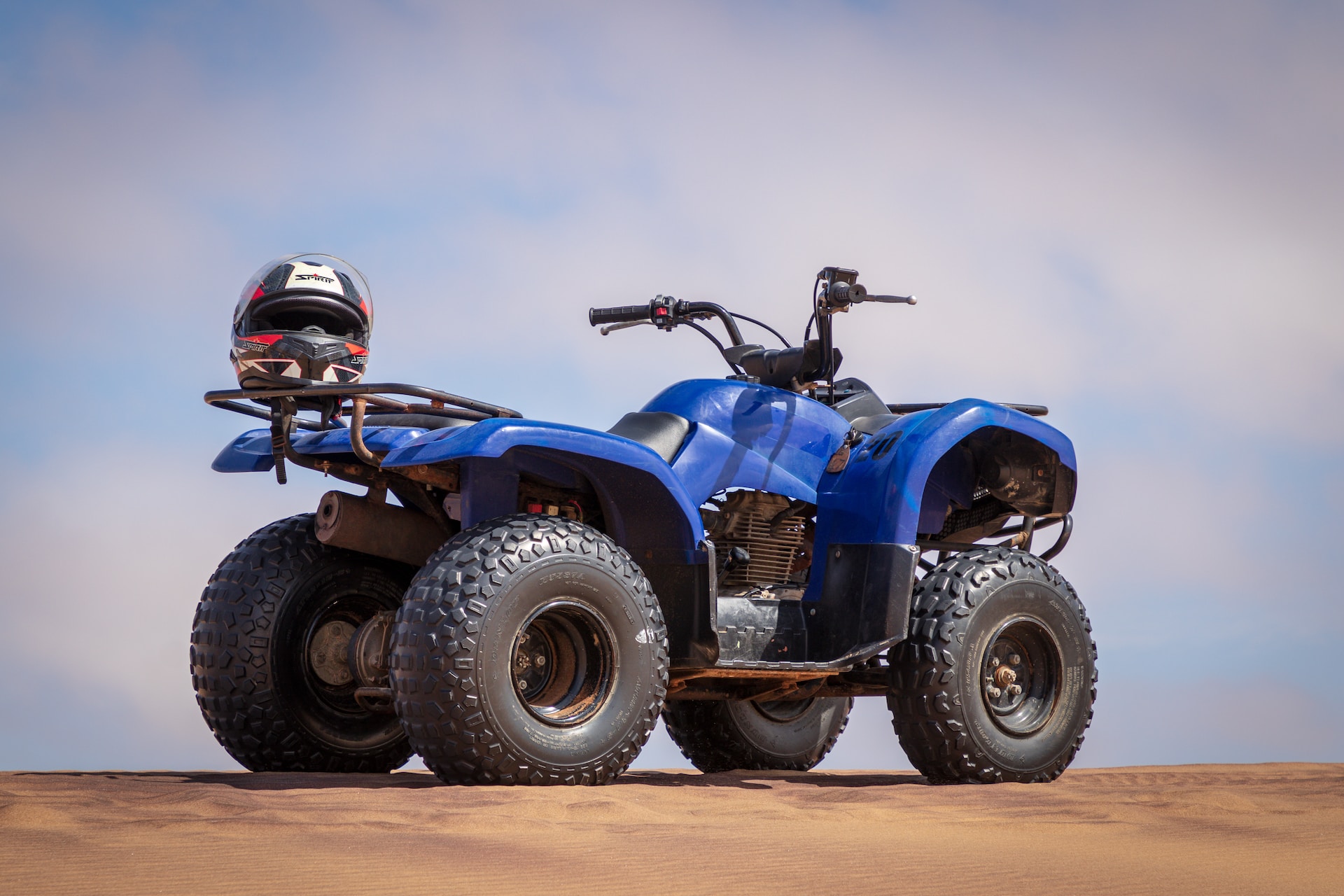Last Updated on November 8, 2023 by Jhonni Jets

Keeping your ATV’s carburetor finely tuned is important for optimal engine performance. Over time, the carburetor adjustments can drift, causing issues like a rough idle, stalling, or lack of power. Learning how to properly adjust your ATV’s carburetor can help resolve these issues and keep your engine running smoothly.
In this comprehensive guide, we’ll cover:
Table of Content
- Carburetor Basics
- When to Adjust the Carburetor
- Adjusting the Air/Fuel Mixture
- Adjusting the Idle Speed
- Additional Tuning Tips
- Resetting to Factory Settings
- Safely Testing Adjustments
- Signs of Other Engine Issues
Equipped with these steps, you’ll be able to tune your ATV’s carburetor like a pro mechanic and keep your engine in top operating condition. Let’s get started!
Carburetor Basics
Before making any carburetor adjustments, it helps to understand what a carburetor does.
The carburetor is responsible for mixing air and fuel in the proper ratios and delivering this air/fuel mixture to the engine’s cylinders. Adjusting the carburetor involves tuning the air and fuel passages to optimize this mixture for performance.
Some key parts and adjustments include:
- Pilot/Slow Jet – Provides fuel at idle
- Main Jet – Provides fuel during acceleration
- Air Screw – Controls air mix at idle
- Float Bowl – Regulates fuel levels
Getting familiar with your particular carburetor model and adjustments will make the tuning process easier. Now let’s look at when adjustments are needed.
When to Adjust the Carburetor
Some symptoms that indicate it’s time to adjust your ATV’s carburetor include:
- Difficult starting or stalling
- Irregular idle and engine RPM fluctuations
- Lack of throttle response and power loss
- Black smoke from exhaust indicating rich mixture
- Backfiring or popping through the exhaust
- High fuel consumption and poor gas mileage
If one or more of those symptoms arise, it’s a good idea to examine and adjust the carburetor. Tuning the air-fuel ratio and idle speed can help optimize performance.
Adjusting the Air/Fuel Mixture
The main adjustments that affect the overall air/fuel ratio include:
Pilot/Slow Jet
This controls fuel flow during idle. Turn clockwise to lean the mixture, counterclockwise to richen. Adjust so idle smooths out.
Main Jet
This adjusts fuel for acceleration and high speed. Turn clockwise to lean out, counterclockwise to richen. Helps improve throttle response.
Air Screw
Turning this clockwise richens low speed mixture, counterclockwise leans it out. Helps even out low RPM range.
To properly adjust the air/fuel ratio, turn each screw incrementally while testing engine response until you achieve the smoothest operation.
Having a helper rev the engine as you tune helps reveal the proper setting. Make adjustments with care in small increments. Significant turning of the screws can make the mixture too lean or rich.
Adjusting the Idle Speed
In addition to the air/fuel mixture, adjusting the idle speed is key for smooth running. Here’s how:
- Start the ATV and allow the engine to warm up fully.
- Turn the idle speed screw clockwise slowly to increase idle, counterclockwise to lower it. Adjust until engine runs smoothly without sputtering or stalling.
- Adjust throttle stop screw so it doesn’t over-rev or dip when throttle is snapped open.
- Test adjustments by blipping the throttle and ensuring it returns reliably to set idle speed.
- Make final tweaks to establish the optimal idle speed and throttle response.
Adjust the idle speed carefullly so it’s not too slow where it struggles, or too fast causing over-revving. Test thoroughly and make small tuning adjustments until idle is perfect.
Additional Tuning Tips
Here are some additional helpful tips for fine tuning your ATV’s carburetor:
- Use a tachometer to accurately set idle and running RPMs to factory spec
- Inspect carburetor gaskets and o-rings for cracks; replace if needed
- Check float levels and make sure carburetor is mounted level
- Use carb cleaner spray to remove varnish or residue buildup
- Replace fuel filter and lines if excessive debris present
- Consider installing adjustable main jets for tuned high-RPM fueling
- Reset to factory settings first if unsure of custom adjustments
Taking the time to properly inspect, clean, and adjust the carburetor can significantly optimize your engine performance.
Resetting to Factory Settings
If unsure about the correct adjustment, resetting the carburetor to the factory settings is recommended:
- Locate the stock carburetor configuration for your specific ATV make and model. This can often be found in the owner’s manual or through an online search.
- Turn the air screw, main jet, idle stop screw, and other adjustable screws to the original factory specifications.
- This will provide a baseline setting that should at least allow the engine to run, though not necessarily optimally.
- From here you can begin testing adjustments to tune the carburetor specifically for your engine’s needs.
Resetting to the carburetor factory settings gives you a known good starting point to then dial-in the proper adjustments.
Safely Testing Adjustments
As you adjust the carburetor, testing must be done carefully:
- Keep flammable materials away just in case of backfires.
- Wear protective equipment like gloves and eye protection when working near the engine.
- Securely support the ATV and engage the parking brake before revving.
- Start testing at lower RPMs and work your way up after verifying lower settings.
- Make adjustments in small 1⁄4 turn increments and evaluate changes slowly.
- Have a fire extinguisher on hand given the risk of ignition when testing.
- Listen and feel for smooth running and proper throttle response.
- Stop immediately if popping, backfiring, smoke, or other issues arise.
Carefully tuning and testing the carburetor helps ensure optimum settings safely. Now let’s examine some other potential issues.
Signs of Other Engine Issues
While poor carburetor adjustment can certainly cause running issues, other problems may be present if tuning the carburetor does not resolve symptoms:
- Vacuum leaks – Can cause lean mixture and RPM dips. Check manifold, hoses for cracks. Spray carb cleaner and listen for RPM changes.
- Valves need adjustment – Improper valve clearance can impact compression. Requires shim adjustment.
- Timing too advanced – Causes pre-ignition and overheating. Reset ignition timing spec.
- Spark plugs fouled – Replace plugs and check gap. Ensure they are proper heat range.
- Low compression – Indicates worn piston rings or leaking head gasket. Requires engine work.
If carburetor tuning doesn’t fix your issues, a compression test or further engine inspection may be needed. Contact a qualified ATV mechanic for assistance.
Conclusion
Keeping your ATV carburetor optimized with professional-level tuning helps provide reliable throttle response and efficient engine operation. Adjusting the air/fuel mixture, idle speed, and throttle stop allow you to dial-in performance and resolve many common issues.
Be sure to:
- Make adjustments in small increments
- Reset to factory spec if needed
- Perform testing carefully
- Double-check for other problems like compression
Don’t be intimidated by carburetor tuning – with proper precautions, testing, and mechanical aptitude, you can adjust the carb like a pro. Your engine will reward you with smoother power and responsiveness. Ride on!

